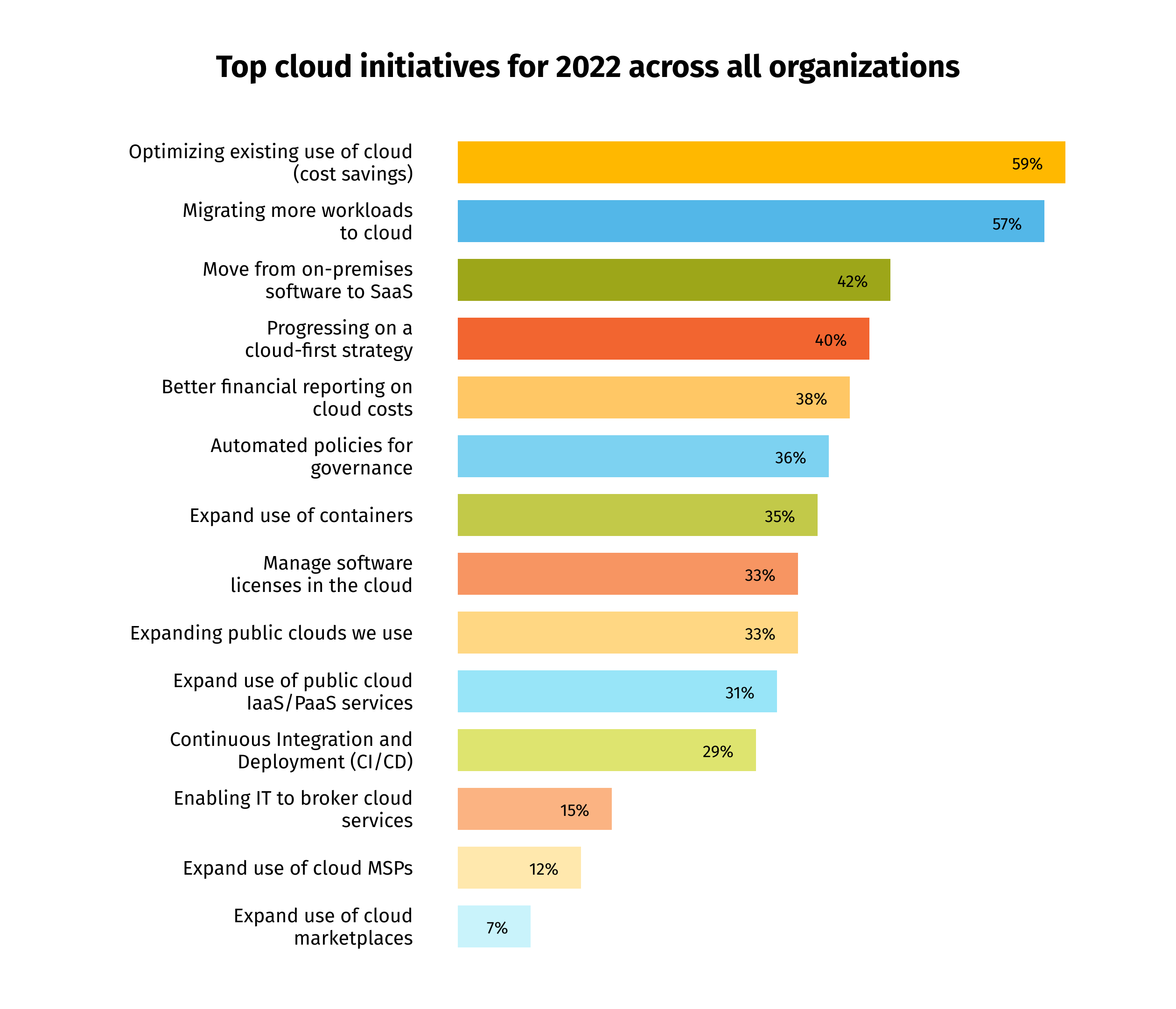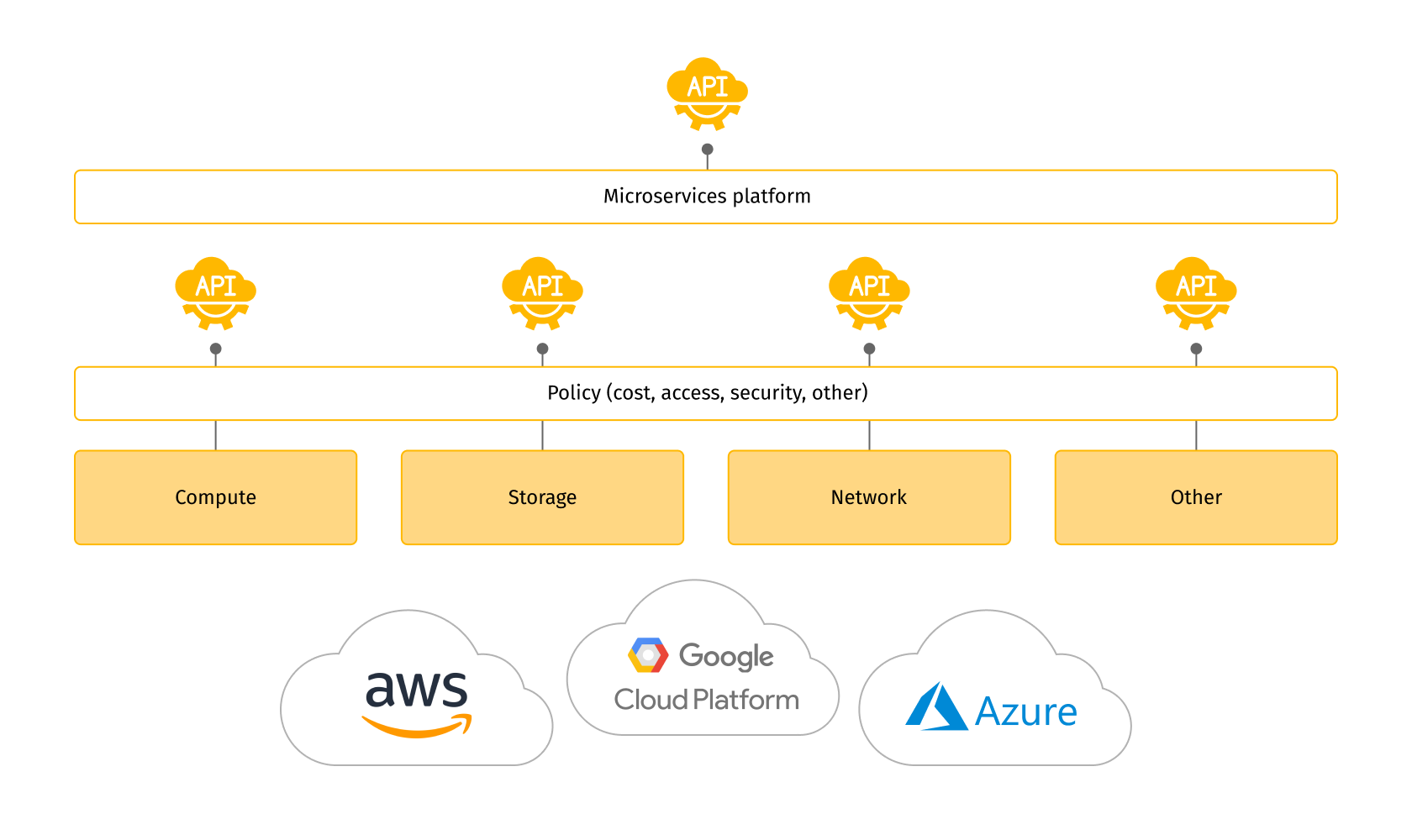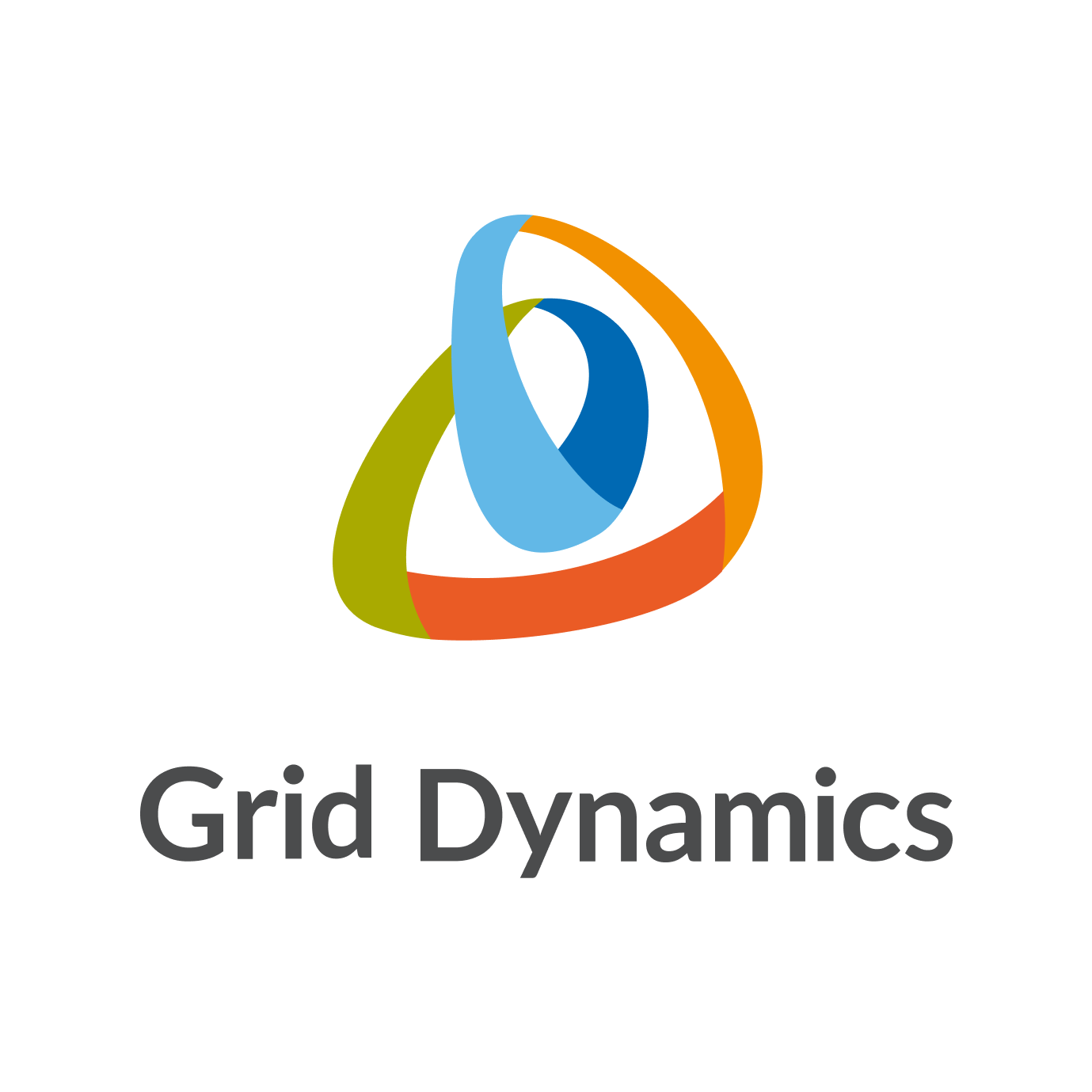
3 strategies for maximizing the value of cloud
Let’s face it; the current state of today’s digital technology revolution would not exist without the cloud. With this undeniable truth, the pressure on business leaders to embrace and optimize strategies for the cloud is mounting inexorably. And we see this with the growing rate of cloud adoption before 2020, and the notable spike after the onset of the global pandemic. Now, in 2022, cloud adoption continues to become more mainstream, and the question is no longer about whether to migrate to the cloud or not, but rather how to maximize the value of the cloud.
In fact, the Flexera 2022 State of the Cloud Report, where respondents - global cloud decision-makers and users - revealed their experiences and insights about the public, private and multi-cloud market, shows that the top cloud initiative for 2022 across all organizations is optimizing existing usage of cloud.

If we look at cloud usage statistics in the same report, we see the following trends:
- Heavy users (currently running more than 25% of workloads in the cloud) are up to 63%, an increase from 59% in 2021 and 53% in 2020.
- Similarly, respondents who reported light usage decreased from 19% to 14%, implying more organizations are advancing through their cloud journeys.
These findings show that cloud adoption and optimization are critical to remain competitive in our ever-evolving digital world. However, while the cloud promises greater efficiency, scalability, cost savings and accelerated innovation that enables new business models and revenue streams, rushed migrations without a strong foundation and a clear strategy can cause the exact opposite.
How can enterprises and SMBs achieve the most value from the cloud in practical terms? Let’s dive in and find out!
Cloud value optimization strategy #1: Public cloud hyperscalers
A fundamental component of creating value in enterprise cloud journeys today is partnering with public cloud hyperscalers the likes of Amazon Web Services (AWS), Google Cloud and Microsoft Azure, among others. Why? Because these cloud providers have the global scale and investment, the deep expertise, the cutting-edge innovation and best-in-class cloud services that are necessary to elevate cloud value to new heights.
Committing to a partnership with one of these hyperscalers from initial migration and into the future will ensure that your digital transformation efforts will be accelerated, more cost-effective, secure, fully-supported and focused on innovation, and industry-disrupting growth from day one. Because they are continuously and heavily investing in these value-propositions to optimize their own journeys of innovation, and with steep competition, you can be sure that you will benefit from a superior level of service from any of the providers.
We highlight AWS, Google Cloud and Microsoft Azure in particular because of their investment into industry-specific cloud solutions or integrations to augment existing third-party solutions. For example, Google Cloud Retail Search, AWS Analytics and ML Platforms, and Microsoft Azure Industrial IoT solutions, to mention just a few.
Furthermore, their focus on sustainable technology innovation for mission-critical workloads enables organizations to build a strong foundation and core skills on one platform that can easily be scaled, extended, or customized to meet changing demands.

To show just how popular public cloud hyperscalers are becoming, according to a new cloud computing market research report, the global cloud computing market size is expected to grow from USD 445.3 billion in 2021 to a whopping USD 947.3 billion by 2026, at a Compound Annual Growth Rate (CAGR) of 16.3% during the forecast period. Backing this trend are more findings from the Flexera 2022 State of the Cloud Report, which show that all respondents already run 50% of their workloads in a public cloud, and expect to increase that number to 56% in the next twelve months. Further, 48% of organizations’ data is in a public cloud today, and respondents expect to add another 7% over the next twelve months.
Learn more about our public cloud hyperscaler partnerships
Cloud optimization strategy #2: Application modernization
Migrating to the cloud is the very first step toward becoming a cloud-native enterprise, but a lot of work still needs to be done to harness the full potential of the cloud. This includes application modernization in the form of building applications and services specifically for a cloud environment and tailored for your industry and business use-cases.

This is a long-term process that’s based on assessing your critical business needs and iteratively modernizing applications according to those needs. This kind of iterative development cycle is made possible with microservices architecture that enables you to change what you need, when you need it, without disrupting any other components in your technology ecosystem. It also enables the creation of a composable platform on which you can select best-of-breed cloud-native technology solutions for each area of business; for example, in the case of composable commerce:
- Product discovery and recommendations
- Supply chain, inventory, order and fulfillment management
- Cart, checkout and POS
- Loyalty programs
- Customer support and conversational AI
- Pricing and promotion optimization
- Customer intelligence analytics
Failing to design a strong foundational architecture can render services from the hyperscalers ineffective and vastly diminish the expected value. Developing this infrastructure also requires strong software engineering skills to build cloud compatible code that works with legacy systems.
Your development team will need to learn new technologies and own each area of business technology as a stand-alone product related to the wider ecosystem for the most effective results. This is where introducing CI/CD pipelines to automate app development processes, and working with an agile co-innovation partner is extremely beneficial. Expert DevOps engineers and system integrators (like Grid Dynamics) can help upskill your current development team or be outsourced to manage the development, deployment and maintenance efforts required to support accelerated cycles of product release, while building in enough flexibility to adapt and continuously innovate over time.
Learn more about our approach to application modernization
Cloud value optimization strategy #3: Managing consumption, cost and performance
A critical part of gaining the most value out of the cloud is continuously optimizing capacity, consumption, cost, performance and business innovation. This involves understanding the complex connection between cloud consumption and business processes while continuously monitoring the full technology ecosystem using advanced analytics and machine learning tools.

A Cloud Center of Excellence is a dedicated team that combines business and technical expertise to assess the potential of each cloud release, helping to reduce operational costs and time to market by establishing corporate cloud governance and standardized DevOps tools and processes. Grid Dynamics has built Cloud Centers of Excellence for some of the largest enterprises in the retail, manufacturing and CPG industries, resulting in massively improved performance and reduced costs.
Further, by integrating an Analytics Platform and Machine Learning Platform into your cloud system, you can leverage data insights and predictive analytics to monitor how an application’s processing power, memory, networking, storage, and other resources required for computational success should change over time according to user behavior. This enables you to predict consumption spikes, giving you insights into how to optimize your consumption and add capacity when needed, and helps you find the right balance between reserved and dynamic cloud instances.
Learn more about reducing cloud costs
Ready to maximize the value of the cloud in your organization?
Partnering with Grid Dynamics will help you:
- plan and deploy a cloud infrastructure and modern DevOps practices to help you perform better and apply it to real problems from day one.
- prioritize business value and a rapid return on investment by defining and prioritizing high-impact, quick wins.
- plan and build a cloud infrastructure, starting with modernizing the systems you already have and then adding new capabilities with the greatest opportunity for impact and cost savings.
- focus on people and processes, not just tools. Because even the most advanced tool is limited without the talent and structures for managing and using it.
Get in touch with us to start a discussion about optimizing your cloud ecosystem for maximum value.
Tired of Pivotal Cloud Foundry licensing costs and workflow customization barriers? Accelerate migration to Amazon Elastic Kubernetes Service (EKS) with our PCF Kubernetes Starter Kit, and reap the following benefits:
Co-innovate in a fully pre-integrated environment
Leveraging the AWS EKS blueprint for best practices and onboarding of your technical team to AWS, we help you learn how to effectively use AWS resources and how to efficiently manage and configure them.
Quick time to market
Provision new environments including all lower and upper environments (development, QA, pre-production, production) within days as opposed to traditional weeks or even months.
Backed by emerging AWS EKS Blueprints
The Starter Kit improves existing features offered by the AWS EKS Blueprint and AWS CDK. It is fully compliant with AWS best practices on infrastructure provisioning, management, and security.
Migrate without changing existing code
The source repository will be automatically migrated and built to run on scalable architecture without a change to your code. The migration script takes care of all the complexities.
DevOps automation
The infrastructure and CI/CD pipelines are built on infrastructure as Code (IaC) principles to automate infrastructure and application provisioning for a stable and consistent environment, faster iterations, risk prevention and extension flexibility.
